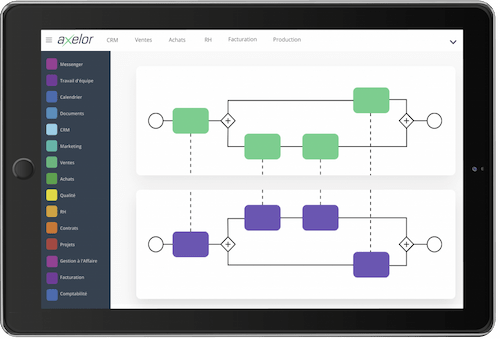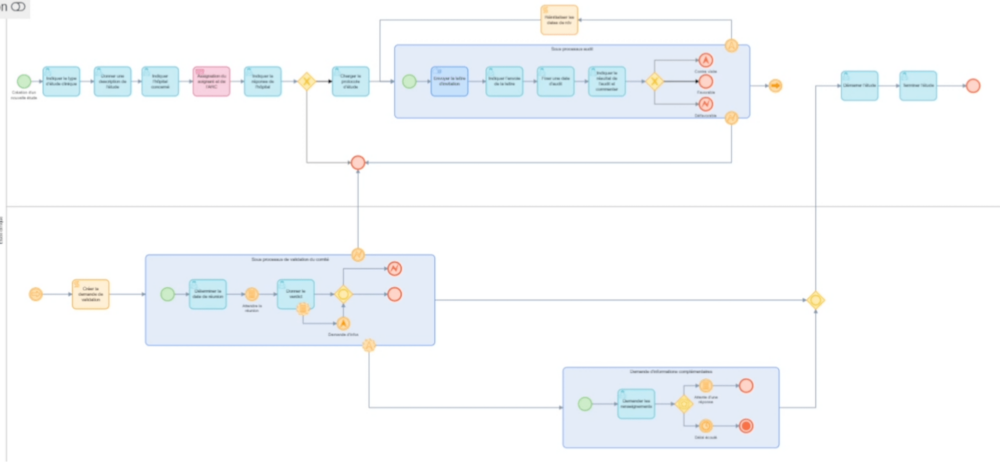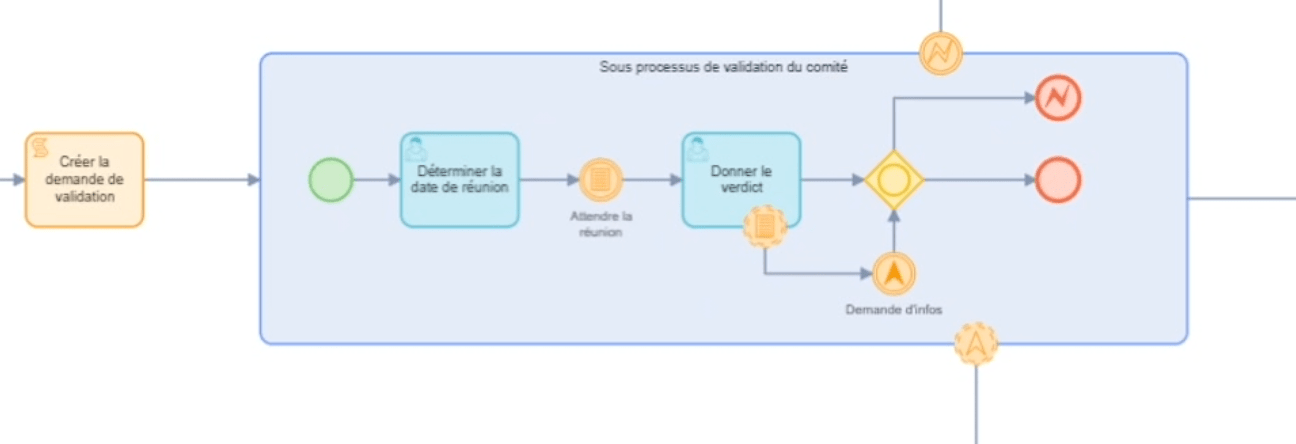Model A Business Process With BPM
Business process modeling or workflow allows to represent the whole management process of a company in order to meet certain company objectives. This new modeling method is primarily intended to enable the company to improve its performance. Most often, the best way to achieve the desired result will be to use what is called a BPM software.
What Is Process Modeling?
When we talk about business processes, we are referring to the set of tasks performed by the staff to achieve a goal defined by the company. These tasks can be somewhat repetitive and could be streamlined. By definition, business process modeling or workflow is an organizational management method that aims to systematize and automate these tasks to improve the company’s business process.

It is a business process modeling tool that is used and is called BPM for Business Process Management. It will accompany the changes that need to be implemented to automate certain tasks within the company and find ways to improve processes in general. Its role is to improve the organization of the company.

What Is The Main Objective Of Business Process Modeling?
The main objective of business process modeling or workflow is to make the company’s activity more efficient and productive. Indeed, the BPM software will allow to point out many means of improvement which can be lacking in the company which will make the processes much more fluid and relevant.
This will be felt at many levels with a real saving of time, savings and of course a real added value throughout the production chain.

How To Define A Business Process?
The definition of a business process is first and foremost a function of the needs of companies and the objectives they wish to achieve. At the beginning, an efficient process is a series of simple actions, but to which many steps are added over time to meet the needs of the business. The business process then becomes more and more complex, with sometimes somewhat time-consuming steps. The best way to define a quality business process is to start from scratch and find a more appropriate method to improve performance.


Why Model Business Processes With BPM?
Business process modeling can’t be invented. Finding the right solution that will be a real improvement can be a bit complex. A complete BPM tool must allow the company to simply create its own applications and optimize all its business processes. Indeed, the BPM is a solution entirely dedicated to the modeling of business processes or workflow. Using a BPM software is the most suitable option for a company that wants to gain performance in a convincing way within its activities.
➡ Learn more about what is BPM

How To Model The Business Processes Of The Company Using The BPM?
BPM is an intelligent tool and business process modeling is done in different steps. It starts with the modeling of the business process and workflow through the use of an internal audit to identify the best way to proceed. This is followed by phases dedicated to the validation of the process in question to ensure that it corresponds to the company’s needs. Once the final validation is obtained, the business process modeling or workflow can be implemented. To better understand this way of working, we have imagined a case study in the context of a clinical trial.

Case study: modeling a clinical trial with BPM

The BPM allows us to model the entire management process of a clinical trial, with its different steps and interlocutors.

With the BPM, we can model the different stages of validation of the study through the definition of an internal audit process that will allow us to determine whether or not the hospital meets the criteria for the study.

Multiple validations can occur consecutively, with the internal validation being followed by the ethics committee’s review.

The second validation phase is of utmost importance as it involves a critical deadline. In case the study application requires additional information, a very short timeframe is provided for response. Failure to meet this deadline necessitates restarting the entire procedure from the beginning.

Validation of the workflow
After modeling the process, we reach the phase of presenting and validating the workflow. This validation is crucial, involving both management and business teams who will be working with the workflow. They play a vital role in ensuring that the process aligns with operational realities and is clear and comprehensible to all members and users who will utilize it.
A business process is of course “alive” and may evolve over time.
The advantage of a low-code BPM solution is that it will allow functional users to modify and evolve the workflow over time.

What Are The Objectives Of BPM?
Unlike process mapping, which aims to report on processes, the role of BPM is to support this business process modeling by proposing an appropriate process modeling method. To do this, it contains various tools, methods, and management techniques whose objective is to observe and control the creation of a business process. More than the management of existing processes, BPM proposes the modeling of the business process or workflow with concrete tools to change in depth the functioning of the company and allow it to achieve the desired result.

What Is The Importance Of Simulation In BPM?
The simulation of the business process or workflow modeling in BPM is of utmost importance. It allows us to test the chosen process modeling method in different ways. This phase allows us to validate the concepts, but to ensure that they are actually viable before launching. This is a very important step in the context of business process or workflow modeling.


What Are The Business Process Modeling Methods?
More than the BPMN (Business Process Modelling Notation), there are other modelling methods such as the UML (Unified Modeling Language), XPDL (XML Process Definition Language), BPML (Business Process Modeling Language) or the OSSAD (Office Support Systems Analysis and Design) method. The choice of method depends first and foremost on the objective that the company wishes to achieve. However, BPM seems to be the most popular solution for business process modeling or workflow.